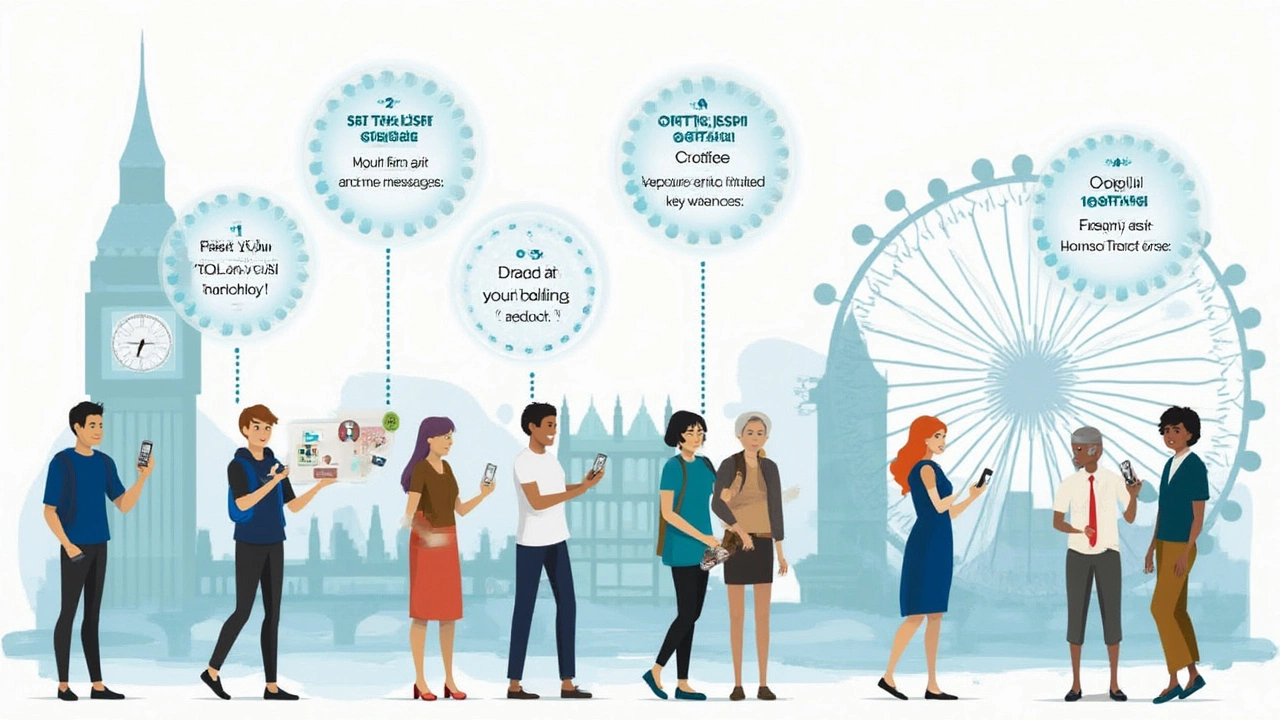Effective Outreach Plan: Strategies for Charities and Nonprofits
 Jul, 12 2025
Jul, 12 2025
Everyone talks about making a difference, but have you noticed how many great ideas fizzle out before they reach the people who’d benefit most? That’s not just bad luck—it’s what happens when organizations skip the planning that gets their message into the world. I’ve seen amazing nonprofits struggle to recruit volunteers, charities pour hours into fundraising campaigns that nobody hears about, and community groups get lost in the noise of social media. The missing piece is almost always a solid outreach plan. If you really want your cause noticed, you need a roadmap. Not just a wish list, but a plan with real steps, clear goals, and a way to know if you’re getting through to anyone at all.
Understanding the Real Purpose of Outreach
Before you start filling out spreadsheets or firing off emails, hang on a second. Outreach isn’t just about sending out flyers or posting on Facebook and hoping for the best. The real goal is to connect—genuinely connect—with people who care about your cause. If you’re in charity work, you probably already get that your mission matters, but that passion can sometimes get lost in translation. That’s why the first thing any outreach plan needs is clarity about who you’re trying to reach and why.
Picture this: A food bank wants to raise awareness about its weekend lunch program. The actual goal? Get more families to use the program and inspire community members to volunteer. Reaching a retired teacher who wants to help is very different from reaching a parent who’s struggling to put lunch on the table. If you lump everyone together, you risk missing both. The lesson? Break down your audience. Know their beliefs, their habits, even where they hang out. This isn’t about casting a wide net and seeing what sticks—it’s about aiming for the right fish.
According to the 2024 Nonprofit Communications Trends Report, 64% of successful campaigns started with detailed audience profiling. That means organizations went beyond “the public” and defined age, concerns, habits, and even tone. So, don’t cut corners here. If you skip knowing your audience, the rest of your plan will probably be built on sand. Write out descriptions of your key groups. If you can, talk to a few of them. What worries them? Where do they go for information? What motivates them to join something?
Here’s where a good old-fashioned table helps.
| Audience Segment | Needs | Preferred Channels | Motivation |
|---|---|---|---|
| Volunteers (Young Adults) | Flexible schedules, hands-on roles | Instagram, TikTok | Social impact, community connection |
| Potential Donors (Local Business Owners) | Clear stats on impact | Email, LinkedIn | Giving back, networking |
| Families in Need | Discretion, easy sign-up | School newsletters, WhatsApp groups | Helping their kids |
Think like a detective. The more you uncover, the easier your next steps will be.
Building the Foundation: Setting Clear Outreach Goals
Here’s where lots of groups stumble. “We just want to get the word out!” is not a real goal. It’s a hope. Real outreach plans set clear, measurable targets. Do you want 100 more social media followers by September? 30 new volunteers at your literacy fair? $5,000 in donations from small businesses by the end of the season? Pin it down. If you can’t measure it, you can't manage it.
And don’t stop with just numbers. Think about deadlines, resources, and responsibility. Who’s steering the ship for each part? Are you relying on two part-timers and a very enthusiastic grandma, or do you have a staff team? Ambition’s great, but wishful thinking won’t get the flyers printed or the social posts scheduled. Scope it realistically.
Next, map your goals to your audience. That’s where that audience table above pays off. If you need to boost youth volunteering, figure out what speaks to young people and where they spend their digital lives. If funding is your top priority, ask how your work fits into the interests of people with the money to donate. “One size fits all” is a myth. Even big-name charities break efforts into campaigns targeting different supporters.
Once you have your goals, write them somewhere visible. Don’t tuck them in a drawer. “We want to serve 200 families by October.” “We want 40% more recurring donors this year.” These numbers keep your team energized and focused.
Pro tip: Use the S.M.A.R.T. method (Specific, Measurable, Achievable, Relevant, Time-bound). Studies show nonprofits using S.M.A.R.T. goals are twice as likely to report success with their outreach. It sounds like business jargon, but it works—try it and you’ll see why.

Crafting Your Message: Content that Cuts Through the Noise
Ever read a newsletter that made you want to doze off? Or scrolled past a post that sounded exactly like every other post out there? That’s what happens when your message is generic. In a world where people have the attention span of a goldfish—seriously, research found humans pay attention for just eight seconds these days—you need a message that grabs hearts and holds on tight.
Start with a strong story. Real people, real impact. Stats are good, but stories stick. Instead of saying, “Donate to our food bank,” try: “Meet Ana, a local mom who brought her kids to our Saturday lunch for the first time. ‘I was nervous, but you made us feel at home,’ she told us.” See the difference?
Modifying your message to fit the medium is key. Social media loves bite-sized, visual content—think photos, videos, infographics. Email newsletters can go a bit deeper. Flyers and posters need to be snappy and clear. Not all channels are equal. What works for one audience won’t work for another.
Here’s a trick: Write out your most important points and ask someone outside your group to read them. If they don’t “get it” in seconds, rewrite. If your content passes the “friend test” for clarity and emotion, it’s more likely to work in the real world.
Consistency matters too. Use the same voice, colors, and logo across all channels. People need to recognize you, whether they see a poster at the coffee shop or out on Instagram. According to marketing studies, consistent branding increases revenue by 23%. Even for small charities, that’s a serious edge.
- Pick a single, clear call-to-action per message. Don’t ask people to volunteer, donate, and show up all at once.
- Keep language simple—one in five Americans reads at a 5th grade level.
- Show faces. Smiles and real people in your visuals boost engagement by up to 38%.
Review, edit, ask for feedback. Don’t be afraid to tweak things as you go. The best outreach plan is one that adapts as you learn what works.
Choosing Outreach Tools and Channels That Actually Work
Postcards? Texts? Facebook ads? There are a million ways to reach out, but not every tool fits every group. Here’s the deal—pick a handful of channels you know your audience uses. Then go all in on those, instead of barely trying a lot of things.
Digital outreach is huge. Email lives on—nonprofits see about $42 for every $1 spent on email marketing, according to 2023 statistics. Social platforms matter, but be picky. TikTok might draw young volunteers, while retirees might prefer Facebook or the trusty phone tree. Mass texting platforms are catching on, with 95% of texts being read within three minutes. That’s way better than most email open rates.
But don’t skip in-person methods if they’re practical. Community events, school partnerships, local radio—these old-school tactics can make a big splash, especially in tight-knit towns or neighborhoods. Volunteer fairs, church bulletins, or resource tables at farmers' markets are small but mighty, if you’re targeting people who might not spend their day online.
The trick? Align channel, message, and audience. If your goal is to sign up families for back-to-school backpacks, partner with local schools and community centers. If you want business sponsorships, LinkedIn and business breakfasts go further than TikTok. Test new channels, sure—but put the most energy where you see the most response.
Here’s a sample outreach channel table for gathering volunteers:
| Channel | Audience Segment | Strength | Weakness |
|---|---|---|---|
| Instagram Stories | Young adults, teens | Visual, shareable, viral potential | Short lifespan, algorithm changes |
| Email Newsletter | Existing supporters | Personalized, detailed info | Open rates vary, can look like spam |
| Community Bulletin Boards | Local residents, all ages | High trust, seen often | Limited space, easy to ignore |
| Text Alerts | Busy parents, urgent needs | Immediate, almost always read | Costs, opt-in necessary |
Mix and match what works. The outreach sweet spot is where your audience’s habits and your resources overlap. Be ready to change it up if something tanks, but give new methods a genuine shot before moving on.
Tracking, Measuring, and Adjusting for Real Results
You wouldn’t pack for a cross-country road trip without checking your map now and then. Same goes with outreach. The best plans use numbers and honest feedback, not just gut feeling, to see if things are working. Data is your friend.
Set up tracking from the start. Use free tools like Google Analytics on your website, or get comfortable with the insights tabs on your social channels. Email platforms let you see open rates, clickthroughs, and who actually took action. If you’re more on the analog side, keep a simple log or spreadsheet—How many flyers did we hand out? How many new signups last week?
Don’t just stare at numbers. Look for trends over time. Did your volunteer applications spike after that live Q&A? Did donations dip after a messaging tweak? Note what changed and when. Set up super simple post-event surveys to get feedback, or just ask people why they got involved. You’ll be amazed at what you learn—sometimes a single comment (“I wish your emails came with pictures!”) will spark your next breakthrough.
Flexibility is vital. Outreach isn’t a set-it-and-forget-it job. If one tactic is flopping, be brave enough to adjust your approach. Maybe your Instagram campaign isn’t landing, but local radio gets new people knocking on your door. Or maybe people love your mission but don’t understand how to help—time to clarify. Stay honest with your numbers, not just your hopes.
Share results with your team, even if they aren’t perfect. Transparency sparks better ideas and keeps people invested. Celebrate small wins! Hit a milestone? Thank every volunteer, post about it, or host a tiny pizza party. Progress, even in inches, builds momentum.
Keep your outreach plan as a living document. Review, update, and tweak it every month or two. The best outreach pros are the ones who listen, learn, and adapt as they go. Your cause deserves to be seen, remembered, and acted on. A killer outreach plan isn’t just paperwork—it’s your missing megaphone.
